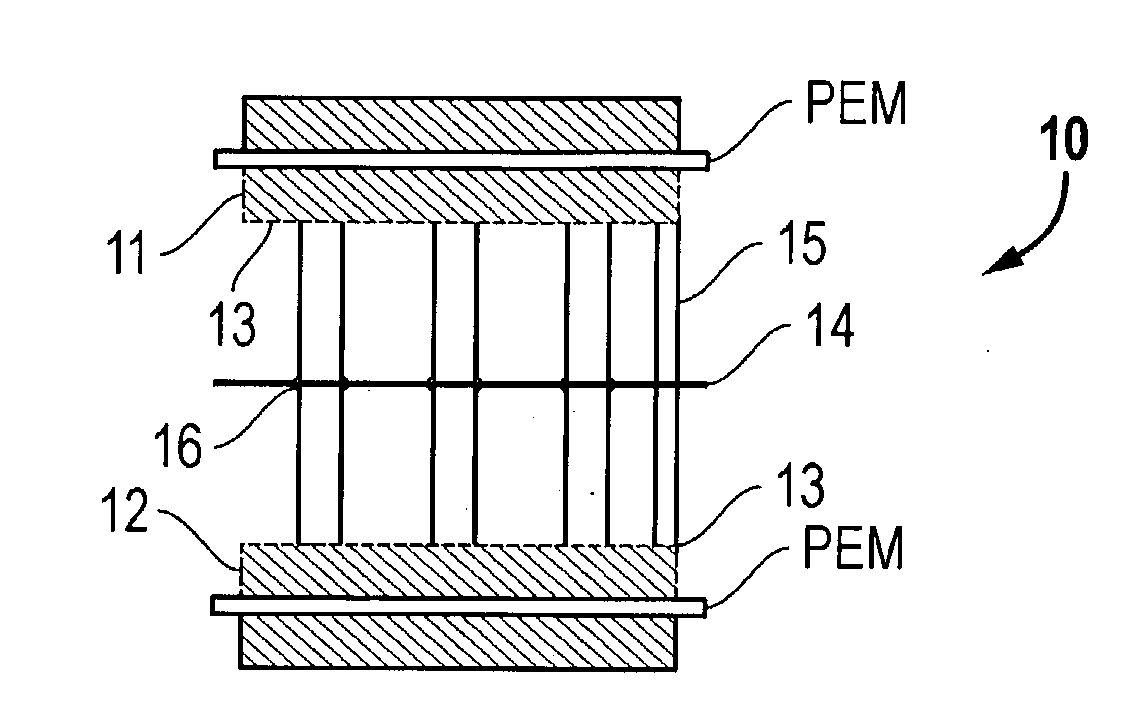Electrochemical cell and bipolar assembly for an electrochemical cell
a technology of electrochemical cells and electrochemical cells, applied in the direction of cell components, cell component details, electrochemical generators, etc., can solve the problems of unacceptably low corresponding power-to-weight ratio, large stack of assembled electrochemical cells, and large stack of weigh
- Summary
- Abstract
- Description
- Claims
- Application Information
AI Technical Summary
Benefits of technology
Problems solved by technology
Method used
Image
Examples
Embodiment Construction
[0065] A bipolar assembly having a post-type flow field was fabricated. The bipolar assembly was fabricated using two 15 mil (0.38 mm) thick gold plated titanium gas barrier sheets, two flow field frames fabricated from Kynar.TM. polymer to be used with the air and hydrogen flow fields, and a high density polyethylene frame for the cooling flow field. The posts consisted of 1 / 8 inch thick carbon spectroscopy rods cut to the correct length. The frames were bonded to the gas barriers with 5 mil (0.127 mm) thick acrylic double-sided tape from 3M.TM..
[0066] Thirty-six evenly spaced 1 / 8 inch holes were drilled into the separator plates in the area of the flow fields. These plates were aligned and sealed to the cooling flow field frame with the double-sided tape. The hydrogen and air flow field frames were then sealed to the separator plates with the same double-sided tape. The spectroscopy rods were cut up into short pieces to match the thickness of the bipolar assembly. The rods were in...
PUM
| Property | Measurement | Unit |
|---|---|---|
| current densities | aaaaa | aaaaa |
| pressures | aaaaa | aaaaa |
| distance | aaaaa | aaaaa |
Abstract
Description
Claims
Application Information
 Login to View More
Login to View More - R&D
- Intellectual Property
- Life Sciences
- Materials
- Tech Scout
- Unparalleled Data Quality
- Higher Quality Content
- 60% Fewer Hallucinations
Browse by: Latest US Patents, China's latest patents, Technical Efficacy Thesaurus, Application Domain, Technology Topic, Popular Technical Reports.
© 2025 PatSnap. All rights reserved.Legal|Privacy policy|Modern Slavery Act Transparency Statement|Sitemap|About US| Contact US: help@patsnap.com



